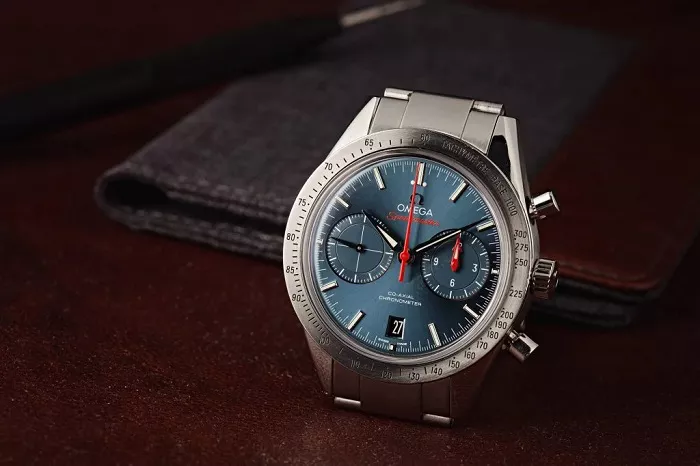Omega is one of the most respected names in Swiss watchmaking. Known for innovation, precision, and timeless design, Omega has become a favorite among collectors and professionals. From the Speedmaster that went to the Moon to the Seamaster worn by James Bond, Omega watches are iconic. Unfortunately, their popularity has made them a target for counterfeiters. If you’re considering purchasing an Omega, learning how to identify a genuine timepiece is essential. This guide offers eight practical and detailed ways to spot a fake Omega watch before it’s too late.
8 Ways to Tell if an Omega Watch Is Genuine
1. Examine the Weight and Feel of the Watch
One of the easiest ways to spot a fake Omega is by feeling its weight. Authentic Omega watches are made from premium metals and sapphire crystal, which gives them a substantial, solid feel. Fake watches often use cheap alloys and mineral glass, making them noticeably lighter. A genuine Omega will feel sturdy in your hand and sit firmly on your wrist without feeling hollow or flimsy.
2. Check the Movement: The Heart of the Watch
The movement is one of the most crucial components of a watch. Omega is famous for its precise, in-house Omega watches movement such as the Co-Axial escapement. Open the case back (if you have the tools and knowledge) and inspect the movement. A genuine Omega will have a clean, complex, and beautifully decorated mechanism, often engraved with the brand name and movement number. Counterfeit watches usually have a basic, unbranded movement with poor finishing.
3. Inspect the Logo and Font Quality
Omega pays great attention to every detail, including typography. The logo on the dial should be sharp, clear, and precisely printed or applied. Examine the Omega symbol and the word “OMEGA” under magnification. Counterfeit watches often have smudged or misaligned logos. Fonts may appear too bold, thin, or spaced incorrectly. Even slight inconsistencies in text can reveal a fake.
4. Observe the Case Back and Engravings
Omega watches feature detailed engravings on the case back, depending on the model. Look for accurate spellings, clean lines, and consistent depth. Engravings should not look etched, shallow, or inconsistent. On models with display case backs, you should see the Omega movement with decoration such as Geneva waves or red jewels. A genuine watch may also include a serial number and model number etched into the case back or lugs.
5. Analyze the Dial for Perfection
The dial of a genuine Omega watch is a masterpiece of craftsmanship. The hour markers, hands, and complications (such as sub-dials or date windows) are placed with precision. Any misalignment is a red flag. Also, inspect the luminous material. Omega uses Super-LumiNova, which glows brightly and evenly in the dark. Fakes often use poor-quality lume that fades quickly or glows unevenly.
6. Confirm the Serial Number and Reference Number
Every authentic Omega watch has a unique serial number engraved on the case, often on the underside of the lugs or case back. This number should match the one on the warranty card and other documents. The reference number indicates the Omega watches model and can be used to verify details online or through Omega’s official service centers. Lack of a serial number or mismatched information is a common sign of a counterfeit watch.
7. Evaluate the Bracelet and Clasp Quality
The bracelet and clasp should also reflect Omega’s craftsmanship. Genuine Omega bracelets are solid, with smooth edges, consistent links, and sturdy end pieces. The clasp will have the Omega logo, which should be cleanly engraved, not merely stamped. Test the clasp’s action. It should open and close smoothly with a satisfying click. Flimsy clasps or rattling bracelets often indicate a fake.
8. Review the Packaging and Documentation
Omega watches come in high-quality presentation boxes with warranty cards, instruction booklets, and certificate of authenticity. The box should be robust, and the printed materials should have crisp fonts and proper grammar. Counterfeiters often replicate boxes, but their materials and printing are usually substandard. A missing or incorrect serial number on the warranty card is a red flag. Remember, genuine packaging complements the luxury product within.
Bonus Tip: Purchase from Reputable Sellers
One of the best ways to ensure authenticity is to buy from an authorized Omega retailer or a trusted reseller. Avoid online platforms where the seller’s credibility is unclear. Price is another clue. If the deal seems too good to be true, it probably is. Always cross-check the Omega watches price with official sources to identify suspicious listings.
Conclusion
Identifying a genuine Omega watch requires attention to detail and some basic knowledge of what to look for. From the movement and dial to the case and paperwork, every element should reflect Omega’s standard of excellence. Counterfeiters have become more sophisticated, but careful inspection and smart purchasing decisions can help you avoid disappointment. Whether you’re a first-time buyer or a seasoned collector, use these eight tips to protect your investment and ensure you’re getting a true Omega masterpiece.
Related Topics:

